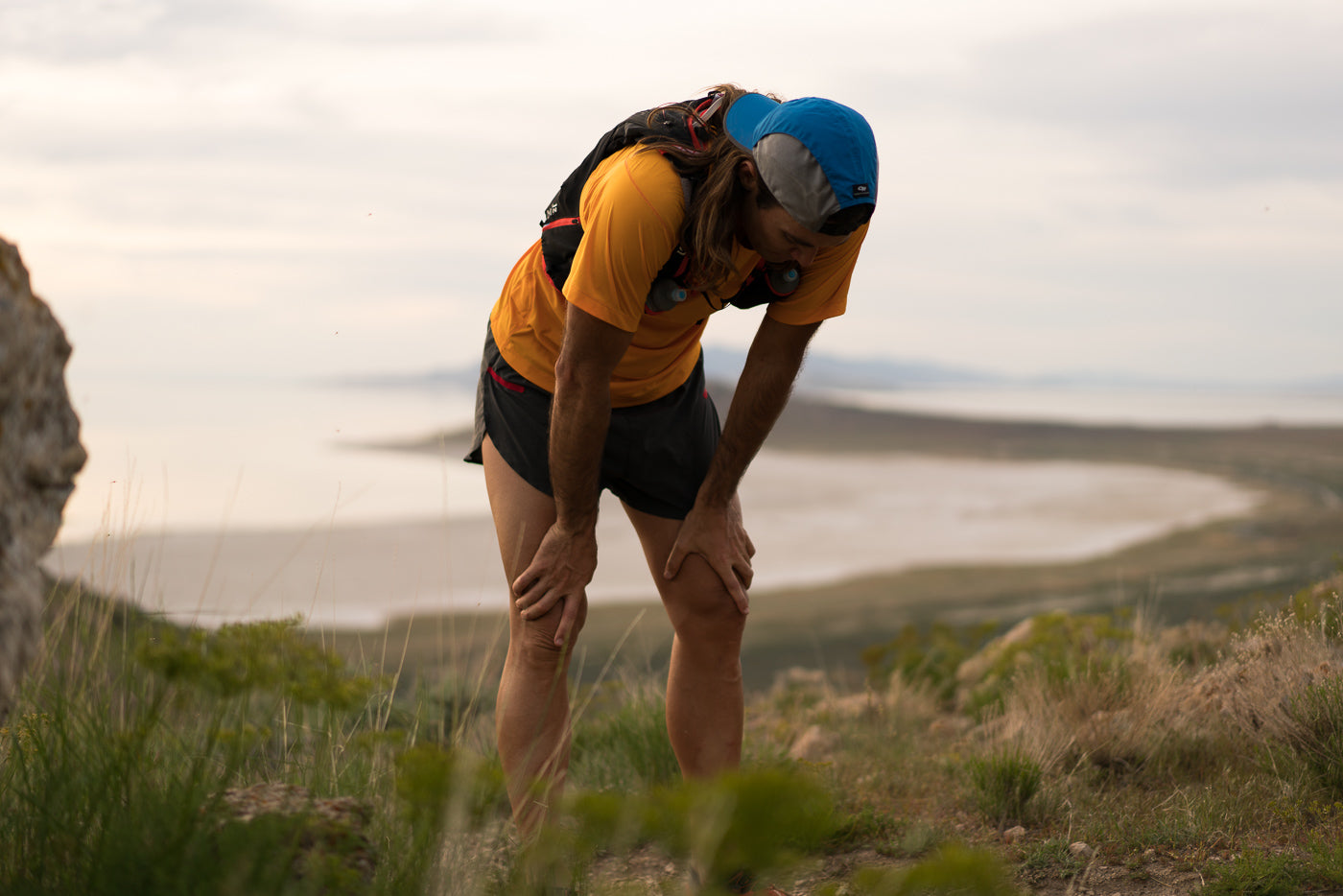
Water isn’t the only thing that needs to be replenished: when you sweat, you lose a lot of electrolytes, too. After a few mishaps, that’s a lesson that Seattle-based trail runner Kevin Friedrich has taken to heart. Friedrich regularly runs 50-kilometer and 50-mile races and has run classic routes like the Grand Canyon’s Rim to Rim and the Zion Traverse. He says that in his early days of trail running, “I would too often miss out on salt, and that would create GI distress and nausea. You can’t just have water—you have to have a balance of salts and carbohydrates, too.”
What to drink is just as important as when to drink. During very intense workouts or in hot and humid conditions, plain H2O just won’t cut it. This is where supplementing electrolytes comes into play. Simply put, electrolytes are minerals in the bloodstream that perform key muscular functions and maintain fluid and nutrient balance in the cells. Electrolyte supplements come in many forms—powders, pills, pre-made drinks, gels, or gummies—and needs vary from person to person, so experiment during training bikes, hikes, and runs to best figure out how your body reacts under various conditions and activities to dial in on the best hydration electrolyte supplement form your body needs for optimal performance.
Scott Costley, D.O., FAAFP is a board-certified family-medicine physician and IRONMAN athlete. He says he sees many athletes suffer from gastrointestinal distress from drinking too much sugar or carbs, so they just hydrate with plain water. However, that puts them at a risk of hyponatremia—low sodium in the blood due to overhydration—especially early in the season.

“Heat injuries and hyponatremia are more likely early in the warm weather season because your body has not had a chance to acclimatize,” he said. “Some athletes will need to increase their salt intake before, during, and after exercise to prevent it.” He also noted that the body will adapt to the warmer temps, and athletes will lose less salt throughout the year as they become accustomed to high-output activities in warmer weather.
Dr. Costley added that “signs of hyponatremia may include finger and hand swelling—you need to increase your salt intake (add salt tablets or eat high-salt foods like pretzels or soup). While dark yellow urine usually indicates dehydration, so increase your water intake.”
There are several essential electrolytes, but the ones most affected by dehydration are sodium, chloride, and potassium. For runs or bike rides over 60-90 minutes long, and certainly over the course of a 4- or 5-hour epic, endurance athletes need to replenish these keys minerals for optimal hydration. Depletion of these minerals exacerbates the symptoms of dehydration, and in extreme cases, can even lead to death.

Alyssa Godesky, a full-time coach, ultra distance runner, and pro IRONMAN athlete uses a simple approach to determine when to consume:
“In terms of timing electrolytes, it’s pretty much a constant thing in my world,” she said. “I use products like NUUN and Skratch both during workouts and then during daily life to be constantly replacing what I am sweating out. If a workout is longer than 60-75 minutes, or is a particularly hard effort, I’ll also make sure to add in some kind of calories (like INFINIT – which combines some calorie needs with the sodium needs) to my hydration.”
Factors like hot or cold temperatures and altitude should also play into how you hydrate and when you supplement with electrolytes. In general, both scenarios will deplete essential electrolytes faster then activity in moderate climate at lower altitudes. No matter what, carry enough water and drink smart and sip often when you’re hiking, biking, backpacking, or running.